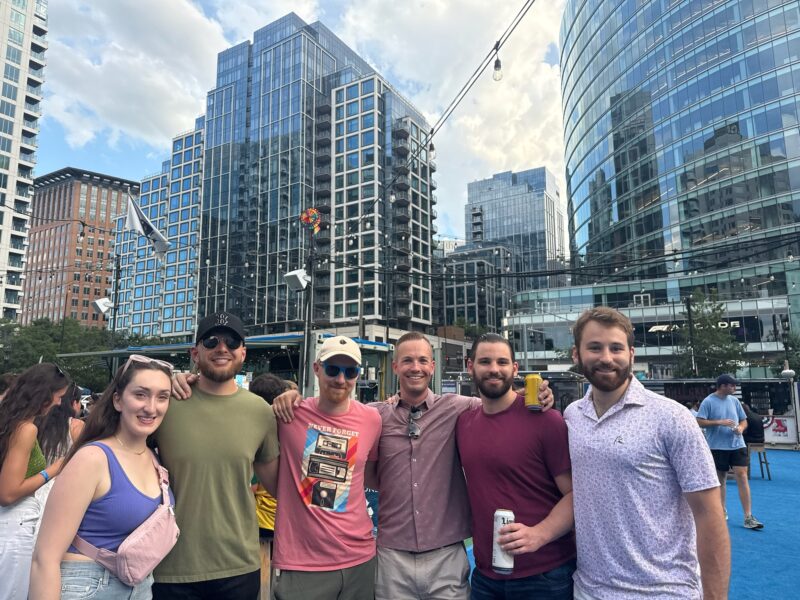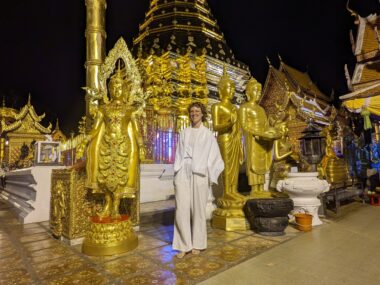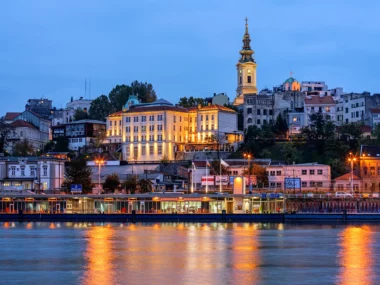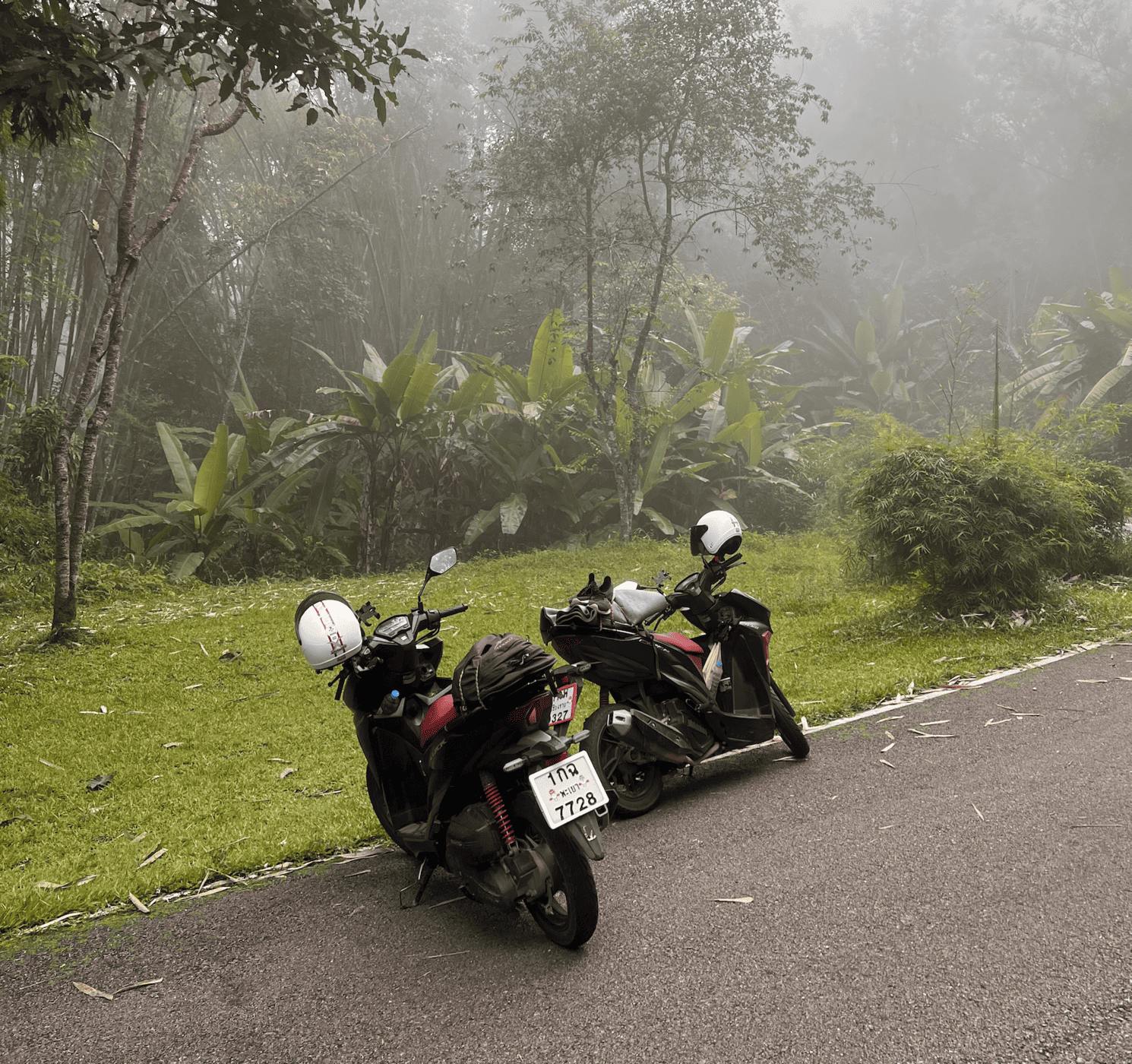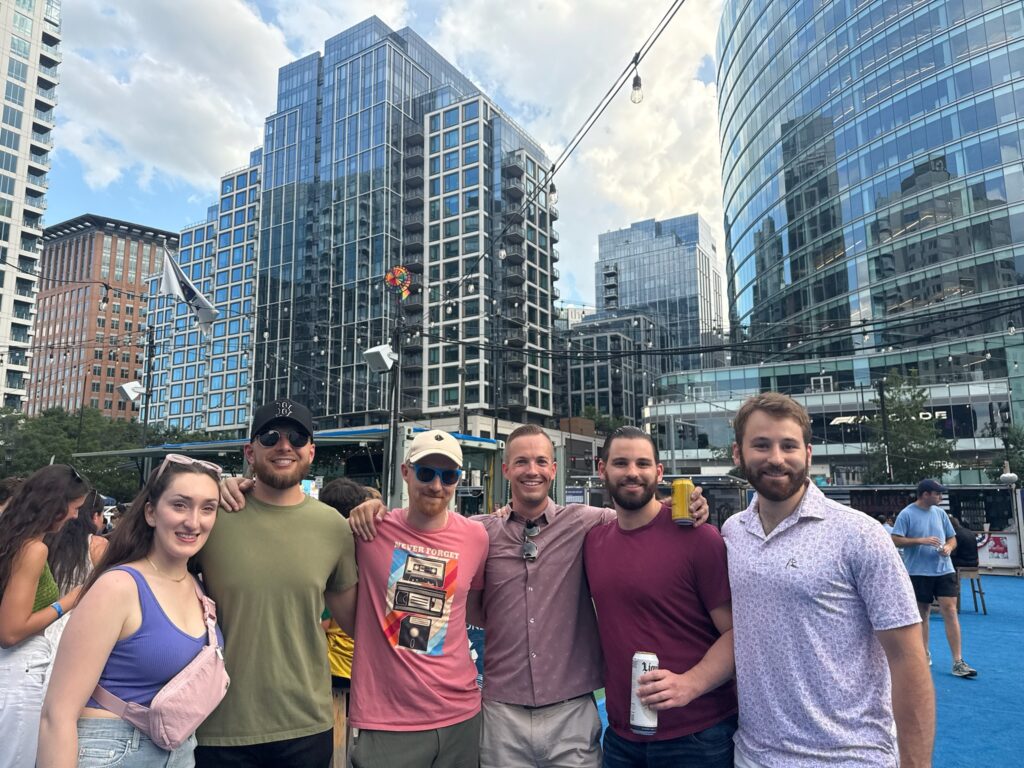
I spent a month in Boston, crashing at my friend Parker Harrington’s apartment out on Revere Beach. It wasn’t planned as a big life-changing trip or anything, more like a “why not?” kind of detour. Parker had space, I had time, and it sounded like the right kind of place to press pause. (I’m not going to bring up the fact that I got refused entry to Canada for some bogus reason so I went to Boston until I figured it out.)
Revere Beach is just far enough outside the city that you get the quiet hum of waves and the kind of sunsets that make you forget you even have notifications. From Parker’s apartment complex, I could walk the coast and still hop a train downtown in under 30 minutes. Those phoneless beach walks do something to your brain. Slows the thoughts down. Reminds you to slow down.
This Boston travel guide blends what I saw, felt, and tasted during that month. Not the typical “10 Best Things to Do in Boston” list, but the way I like to explore: local hangouts, historical sites, good food, and experiences that are a little different.
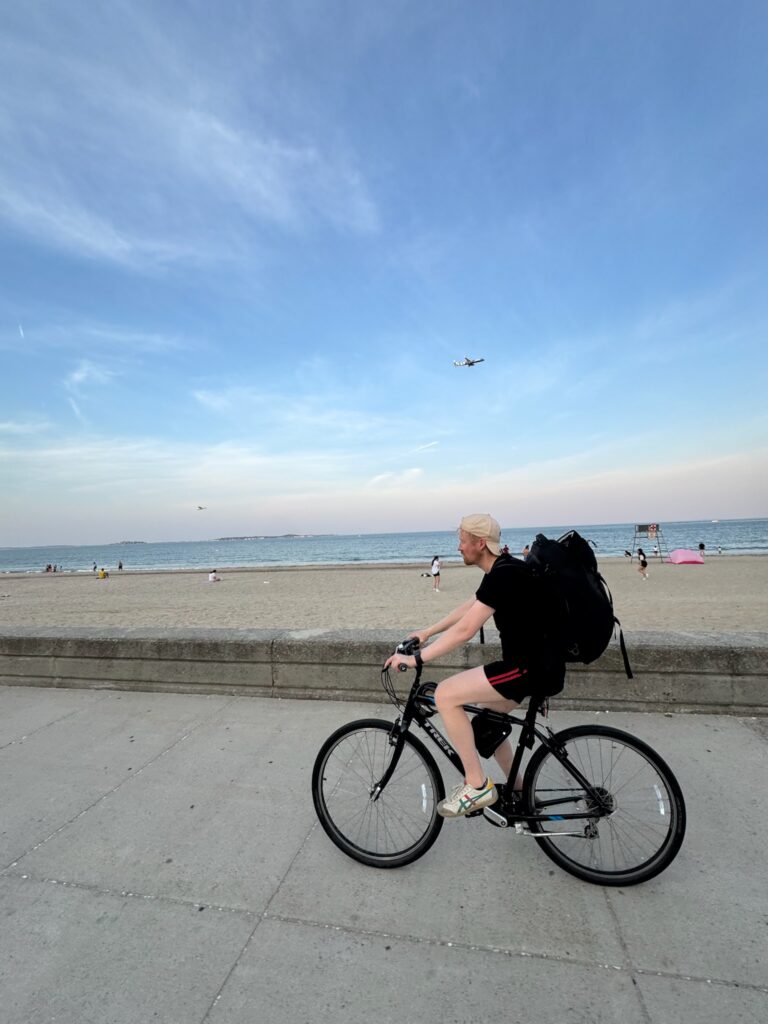
Table of Contents
Revere Beach Living: Why This Spot Works
Most days started with a walk along Revere Beach, the oldest public beach in America. It’s not crowded like Venice or manicured like Miami. It’s raw. Real. Sometimes quiet, sometimes loud with laughter from locals and families. It felt very relaxing. I’d sit on the sand with a notebook, just staring out into that endless Atlantic stretch. There’s something about hearing seagulls instead of Slack notifications that hits differently.
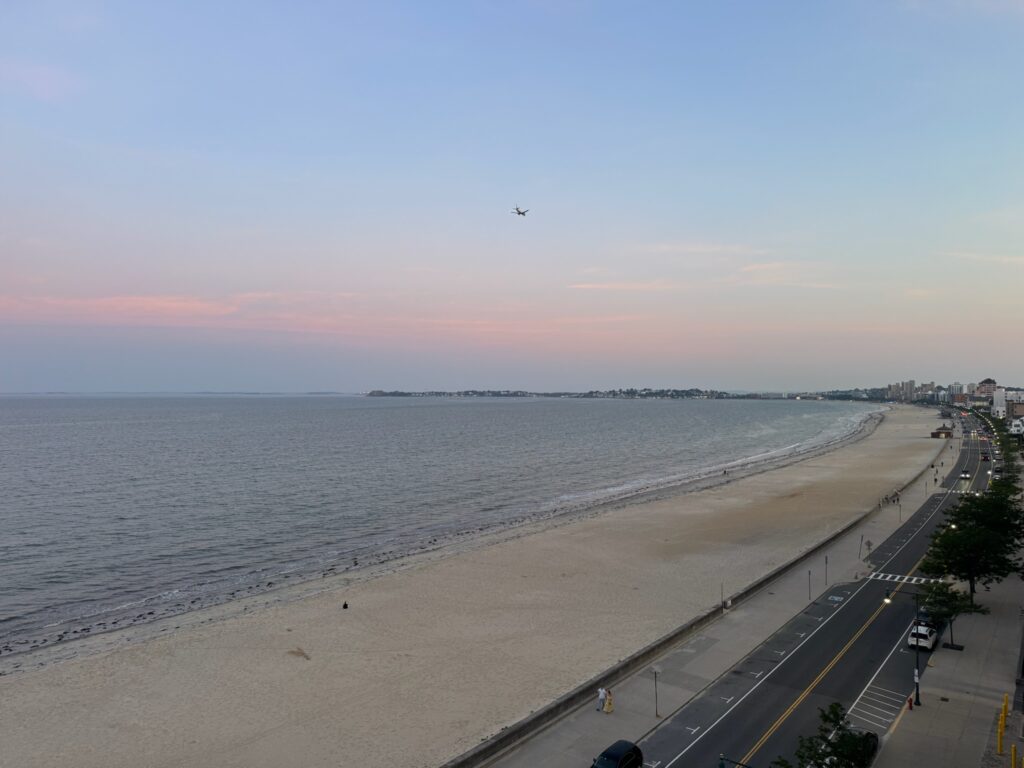
Parker’s Apartment Complex. Parker’s place was in one of those big beachfront apartment complexes, just steps from the water. Modern building, decent amenities, and rent that was actually reasonable priced compared to downtown Boston. The complex had a gym, pool, movie room, coworking space, and most importantly, a direct path to the beach. Honestly, just a fantastic spot to hang out.
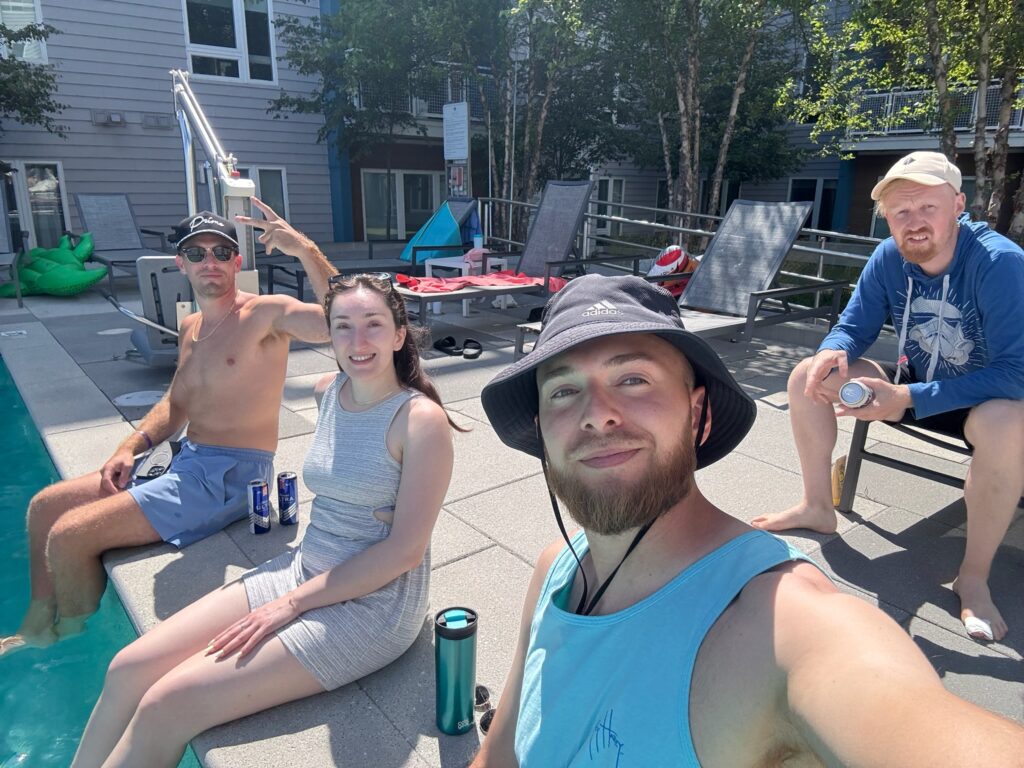
The Revere Beach Experience. Revere Beach stretches for about three miles of sandy coastline. Early mornings around 6-7 AM brought joggers, dog walkers, and the occasional windsurfer checking the waves. The beach has a working-class authenticity that’s increasingly rare in coastal New England. No pretense, no velvet ropes, just families hanging, folks playing beach games, and old-timers relaxing.
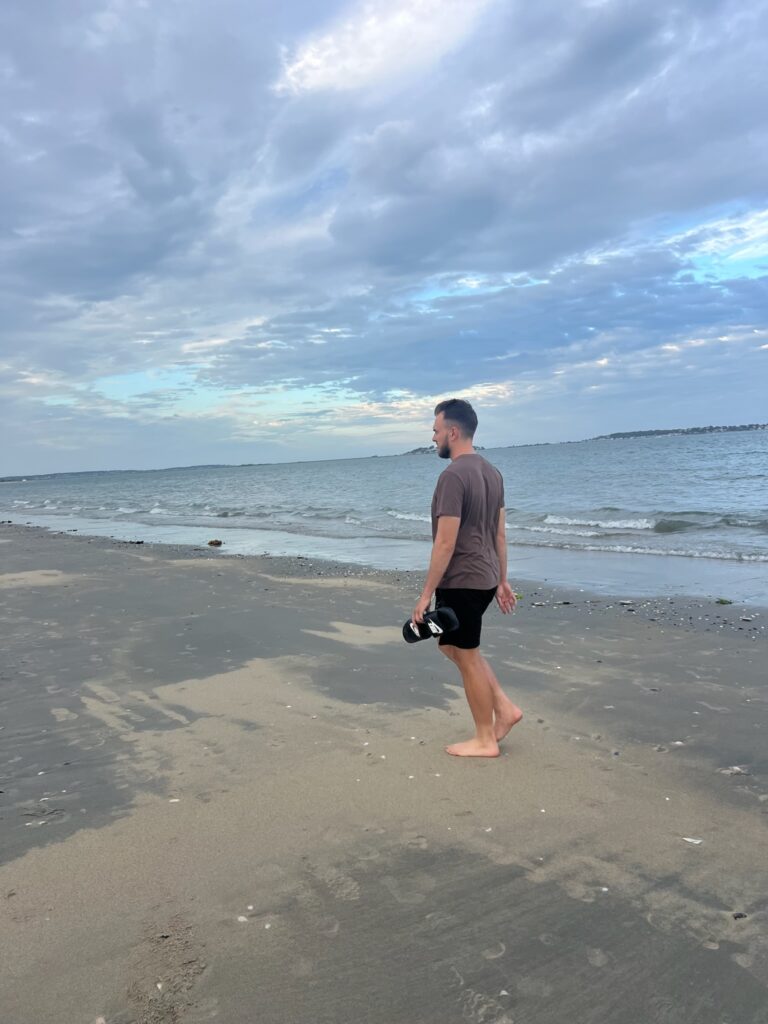
Getting Around from Revere The Blue Line stop sits literally steps from the sand. Downtown Boston in 30 minutes, Logan Airport in 15. Parking is free along most of the beach, but public transportation makes a car unnecessary. This location gave me the best of both worlds: ocean lifestyle with city access.
Why Revere Beach Works for Travelers Revere Beach taught me that sometimes the best travel experiences happen when you’re not trying to optimize for Instagram. It’s about finding a rhythm that feels sustainable, a place where you can exhale and actually think. The beach became my reset button. Whenever work or life felt overwhelming, I’d come back to the sound of waves and remember why I was there.
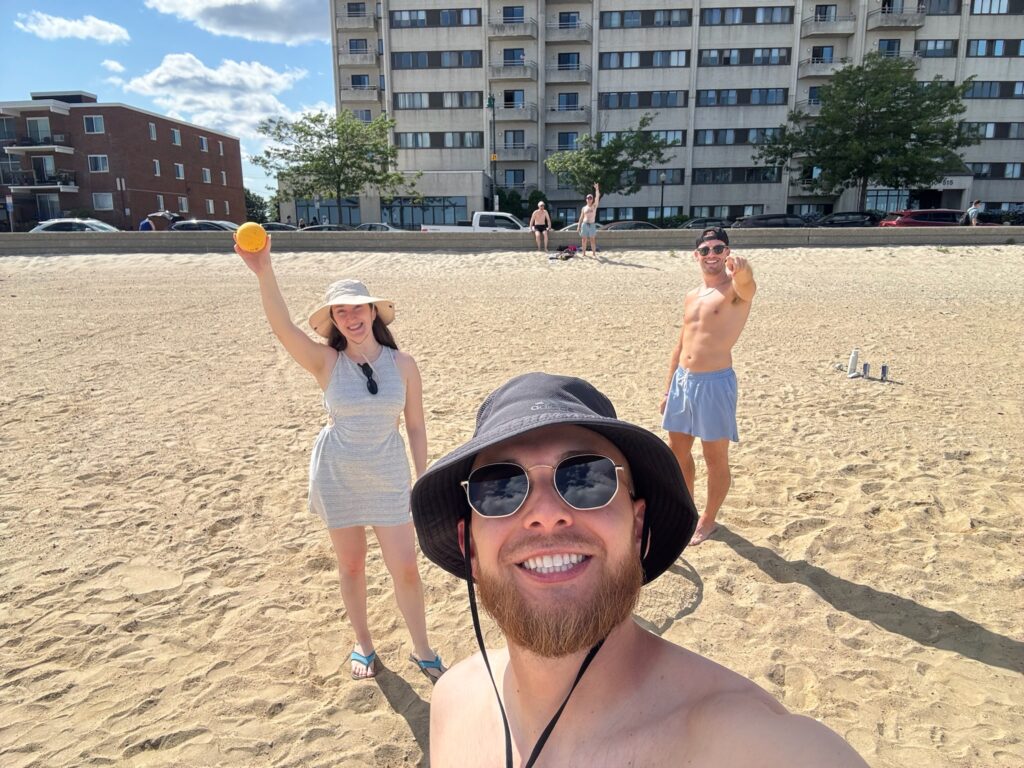
If slow mornings, long walks, and cities that earn your attention speak to you, join our Uncharted community and swap stories with travelers who work and wander.
Nahant Island Coastal Bike Ride
One of the best days I had was biking out to Nahant, a small island connected by a narrow causeway just north of Revere. The road to get there hugs the coast with blue water on both sides. Once we hit the causeway, it made you feel like you were in a little New England town right on the beach with very few people around and views that stick with you. This experience is one of the best hidden gems in my Boston travel guide, showcasing the unique charm of the area.
The Bike Route The ride from Revere Beach to Nahant covers about 4 miles each way, mostly flat with gentle rolling hills. You start by heading north on Revere Beach Boulevard, then connect to Lynn Shore Drive. The causeway to Nahant is the highlight: a narrow strip of land with ocean on both sides, about a mile long. When the tide is high and waves crash over the road, it feels like you’re riding through the sea itself.
Nahant Island Nahant has this windswept, wild edge to it. It used to be a military outpost, and some of those old forts still exist in the underbrush if you look hard enough. But mostly, it’s a place of cliffs, crashing waves, and the kind of quiet that takes you away from your screens.
The island is tiny, only about 1.25 square miles, but packed with character. Victorian mansions perch on rocky outcroppings, their weathered shingles telling stories of summer retreats and winter storms. The year-round population is only about 3,500 people, and you can feel that small-town intimacy immediately.
Historical Background History buffs take note: Nahant was used as a coastal defense during multiple wars. Fort Ruckman, built in 1940, was part of Boston Harbor’s defense system during World War II. Today, surfers use the same waves once scanned by soldiers. The ruins are still visible if you know where to look: concrete bunkers slowly being reclaimed by beach grass and salt spray.
Bike Info The ride takes about 30-45 minutes each way at a leisurely pace, but I spent three hours total just stopping to take photos, check out the sites, and watch the waves. The best spot is East Point, where you can see further out into the ocean.
Best time for the ride is mid-morning to early afternoon, when light is good for photos. Bring water, snacks, and a windbreaker because it’s always breezy out there. We went around evening time which was also great but it got dark before we were back.
Why Try this Ride This bike ride was my meditation. Something about the physical movement, the salt air, the endless horizon cleared mental cobwebs I didn’t even know were there. It reminded me why I travel and why places that aren’t on everyone’s bucket list like Nahant, are so unique and special.
Boston Freedom Trail Walking Tour
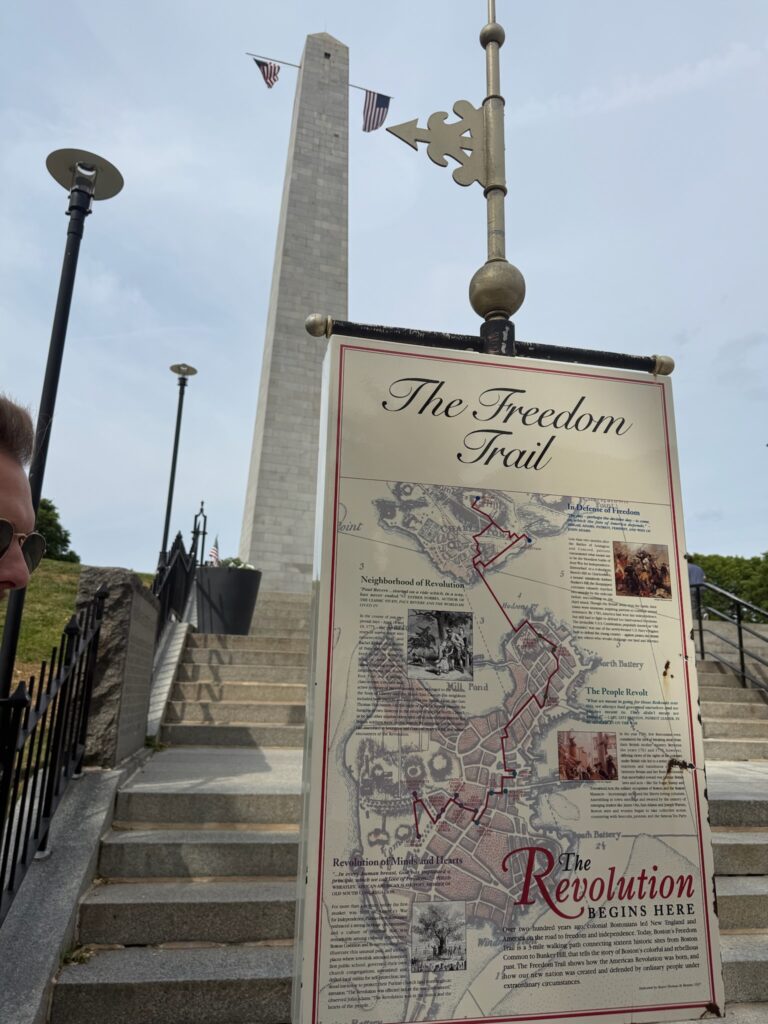
Boston is a city made for walking, especially if you’re the type who likes to connect the dots between past and present. One afternoon, we decided to walk a portion of the Freedom Trail to Bunker Hill then to the USS Constitution.
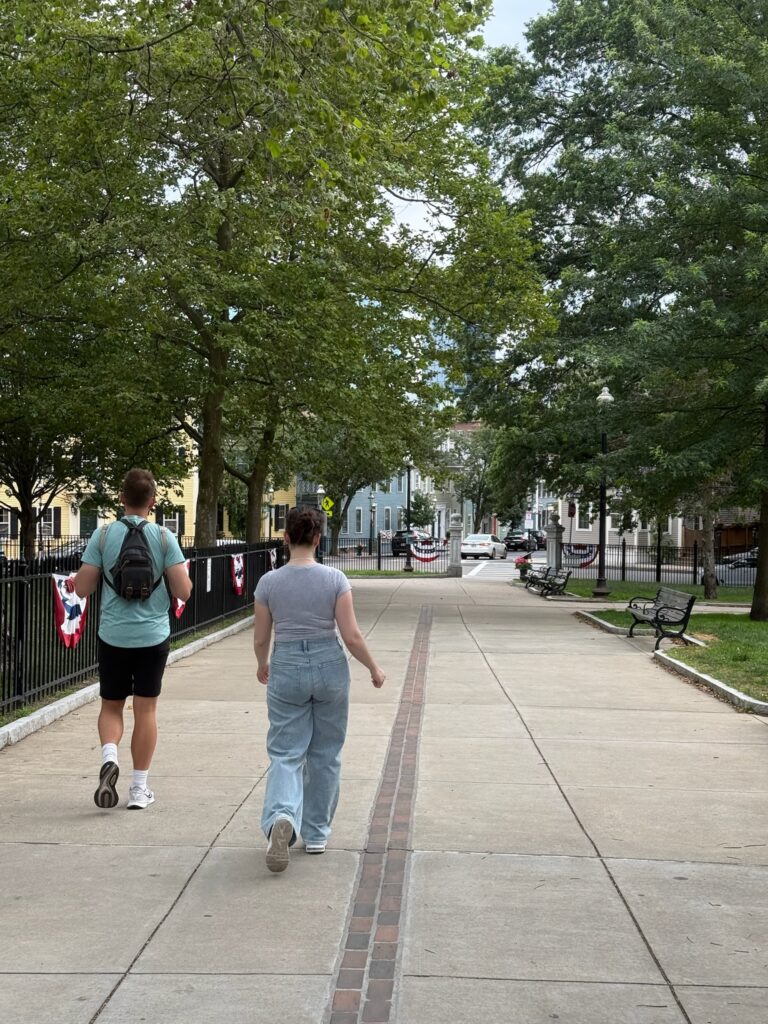
Bunker Hill Monument Walk From the nearest train station, we headed to the Bunker Hill Monument. It’s about a 10-minute walk through Charlestown’s narrow streets, past brick row houses and corner pubs that haven’t changed much since the 1800s. The neighborhood feels authentic with working families, longtime residents, and the kind of place where people still wave from their stoops.
Climbing Bunker Hill It’s a bit of a climb (literally, if you want to go up the 294 steps), but the view at the top and the weight of what happened there makes it worth it. The Battle of Bunker Hill was one of the first major conflicts of the American Revolution, fought on June 17, 1775. Standing at the summit with Boston stretching in every direction, it’s hard not to feel that legacy.
The monument is a 221-foot granite obelisk, completed in 1843. The climb is narrow and can get claustrophobic, but the 360-degree view from the top is spectacular. You can see downtown Boston, the harbor, and understand the strategic importance of this hilltop position.
From there, we headed to see Old Ironsides.
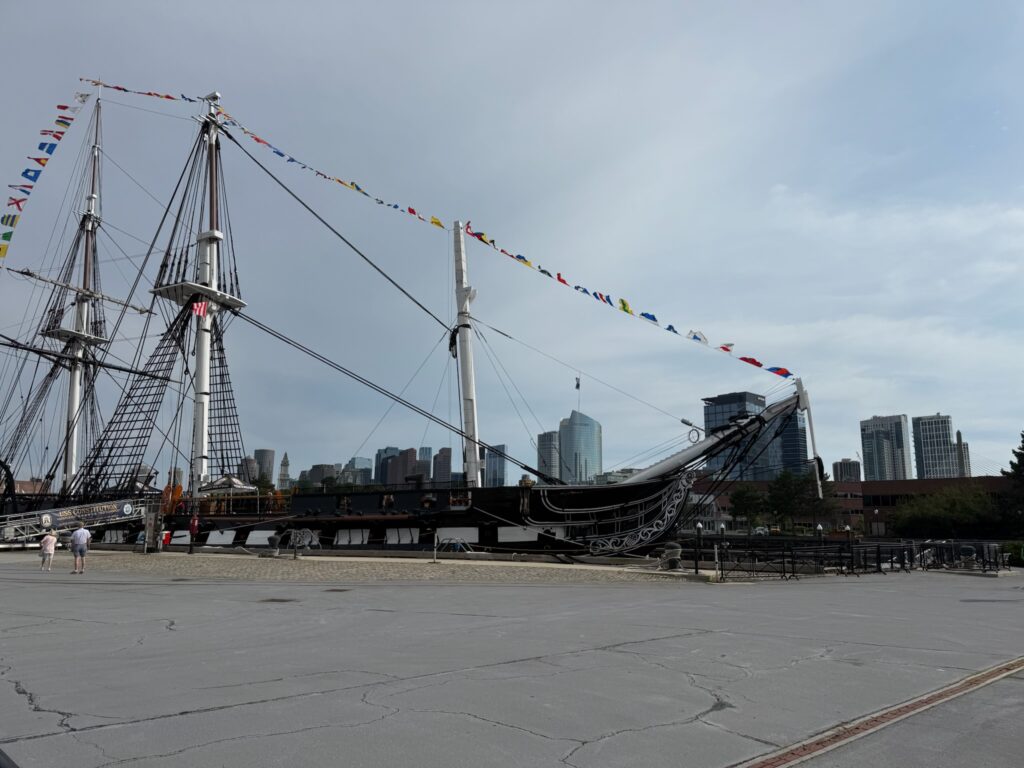
USS Constitution Experience “Old Ironsides,” as she’s nicknamed, sits in Charlestown Navy Yard, easily accessible via the Orange Line to Community College or the water shuttle from Long Wharf. The ship launched in 1797 and never lost a battle during the War of 1812. Walking her decks, you can feel the history in the worn wooden planks under your feet.
The ship is currently open Friday through Sunday, 10 AM to 6 PM, with free admission and free tours led by active-duty Navy sailors in period uniforms. They don’t just recite facts. They tell stories about life at sea, about the brotherhood forged in wooden hulls, about what it meant to defend a young nation’s honor on the world’s oceans.
Key Freedom Trail Stops
- Faneuil Hall (“The Cradle of Liberty”) where Samuel Adams and other revolutionaries held meetings
- The Old North Church, where Paul Revere received the famous “one if by land, two if by sea” signal
- The site of the Boston Massacre, marked by a circle of stones in the pavement
Why The Historical Freedom Trail Matters Walking through Boston’s revolutionary history isn’t just about tourism. It’s about understanding the physical spaces where abstract ideals like freedom and democracy were debated, fought for, and won. These weren’t just historical figures, but real people who walked these same streets, faced impossible odds, and changed the world.
The walk should take about 4 hours total, but you can easily spend a full day. History in Boston isn’t preserved behind glass. It’s woven into the living fabric of the city.
Armenian Museum Cultural Experience
This one hit deeper than I expected. The Armenian Museum of America in Watertown isn’t huge, but it’s powerful. You walk through exhibits that pull you into the resilience of a people who’ve faced exile, genocide, and displacement, yet still preserved art, poetry, food, and joy.
Finding the Museum The Armenian Museum sits on Mount Auburn Street in Watertown, about 20 minutes from downtown Boston by T (Red Line to Harvard, then bus). It’s in a converted Victorian mansion, surrounded by tree-lined streets that define suburban Boston. The building itself tells a story: immigrants making homes in America, transforming spaces to hold their memories and culture.
The Genocide Exhibition The museum’s section on the Armenian Genocide was intense and eye-opening. Over 1.5 million Armenians were killed by the Ottoman Empire during World War I, from 1915-1923. The way the museum tells these stories through personal letters, photographs, and survivor accounts is heartbreaking, but necessary. It stays with you.
One exhibit that particularly affected me featured photographs of survivors who rebuilt their lives in places like Boston, Detroit, and Los Angeles. Their faces showed both trauma and determination, the complex lives of people who’ve lost everything but refuse to give up.
The Armenian Restaurant Experience Before the museum, we stopped for lunch at Jana Grill nearby. The walls were covered with all kinds of unique paintings and decorations. The food was absolutely insane! I loved every bite, I couldn’t believe how good it was.
The food felt like memory in edible form: grape leaves stuffed with rice and herbs, lentil soup thick with tradition, grilled lamb with warm flatbread, and baklava that dissolved on your tongue. The kind of meal that feeds more than just your stomach.
Why This Experience Mattered This visit taught me something about the difference between tragedy and trauma. Tragedy happens to you. Trauma is how you carry it forward. The Armenian community in Boston has transformed its historical trauma into cultural strength, building institutions that ensure its stories are never forgotten.
Boston Harbor EDM Cruise
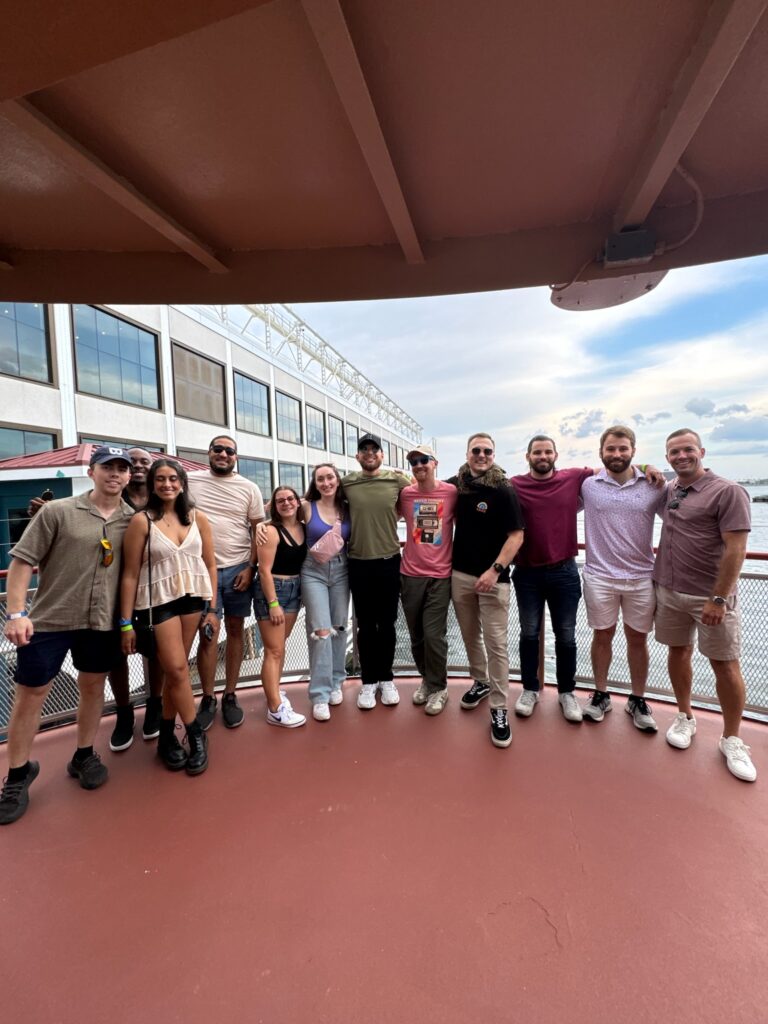
This one’s for the “you only live once” files. One night we joined an EDM boat party hosted by Boat Cruise Summer Series, and it was like someone dropped Coachella on a boat. Beats, lights, sea breeze, skyline. If you’re into house music and dancing while watching the sun dip behind Boston’s skyline, this is a no-brainer.
The Boat Setup The boat was a 150-foot yacht that could hold about 300 people, departing from Long Wharf near the Aquarium T stop. Tickets ran about $60-80 depending on the DJ lineup, which isn’t cheap, but when you factor in the venue, music, and experience, it felt worth it. The crowd skewed young professional: late twenties to early thirties, people who work hard during the week and want to lose themselves in music on weekends.
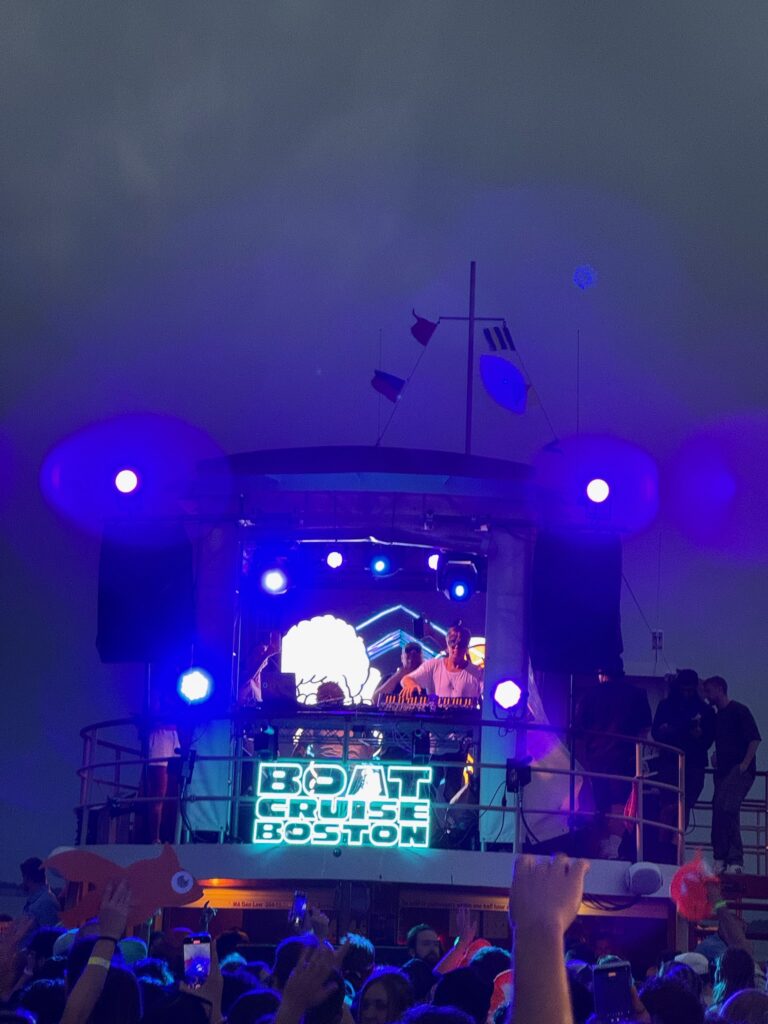
The Musical Experience The DJs weren’t just pressing play on Spotify. These were professionals who understood how to read a floating dance floor. The music started mellow during boarding with deep house that mixed with the harbor sounds. As we pulled away from shore, the energy built gradually. By sunset, everyone was moving.
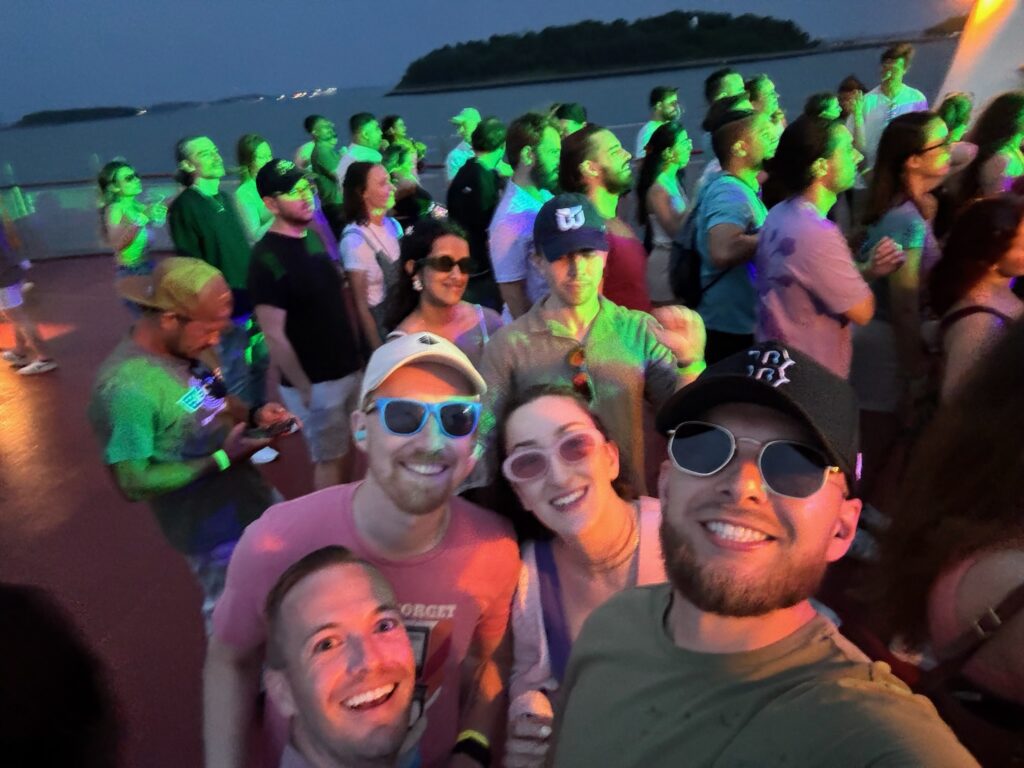
The Setting Magic It wasn’t just about the party. It was the setting. Floating between the city and the sea, not quite land, not quite gone. Felt poetic in its own way. Planes flying in overhead to land and a little bit of rain. It was magic.
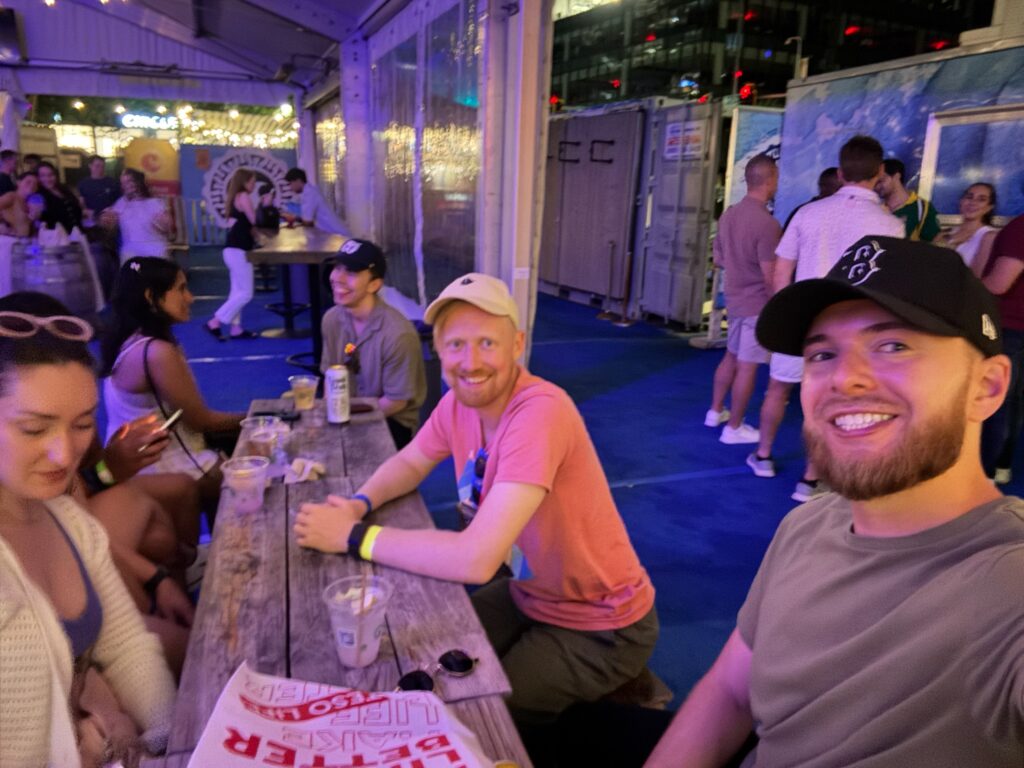
Why It Worked This experience showed me a side of Boston I hadn’t expected. The city has a reputation for being buttoned-up, historical, and academic. But here was evidence of a younger, more spontaneous Boston. People letting loose, having a great time, creating temporary communities around shared experiences.
Best Coffee Shops in Boston: Pavement, Tatte, Blue Bottle
Boston knows its coffee. I rotated between three regulars, each serving different needs and moods throughout my month-long stay.
Pavement Coffeehouse Great for bagel sandwiches and writing sessions. The vibe is college kid meets freelancer meets “I’m here to think deeply.” My regular spot was on Newbury Street in Back Bay, housed in a narrow space with exposed brick walls, mismatched furniture, and worn wooden tables that show rings from thousands of coffee cups.
They roast their own beans, and you can taste the difference. I became obsessed with their iced coffee with a splash of oat milk. The bagel sandwiches are legendary among locals. It’s a definite recommendation for anyone looking for a place to get work done or read.
Tatte Bakery & Café Bougie in the best way. Their almond croissants are spiritual. The locations are beautifully designed with high ceilings, large windows, plants everywhere, and display cases filled with pastries that look like edible art.
Their almond croissants are genuinely transcendent. Flaky, buttery pastry filled with almond cream and topped with sliced almonds, served warm. The shakshuka bowl became my go-to savory option: eggs poached in spiced tomato sauce, served with fresh bread.
Blue Bottle Coffee Sleek, minimal, serious about the pour. I’d grab a New Orleans-style iced coffee and people-watch. Blue Bottle brings West Coast coffee culture to Boston with precision-focused, minimalist, almost ritualistic brewing approaches.
Each place gave me something different: Pavement provided space to write and think, Tatte offered beauty and a comfortable work space, and Blue Bottle had insanely good coffee.
Boston Public Library Hidden Gems
The Boston Public Library is one of those spots that catches you off guard. The exterior is stately, but once you step inside the main reading room with its arched ceilings and long rows of green lamps, it feels like Hogwarts meets Harvard. I spent entire afternoons there journaling or just sitting in silence.
Architectural Marvel Founded in 1848, it was the first large free municipal library in the United States. The McKim Building is an architectural masterpiece designed by Charles Follen McKim. Walking through its halls feels like entering a cathedral dedicated to knowledge rather than worship.
The main entrance leads to a grand staircase flanked by marble lions and decorated with murals by John Singer Sargent. The staircase itself is a work of art with yellow Siena marble steps worn smooth by generations of readers, thinkers, and dreamers.
Bates Hall Reading Room This is where the magic happens. The barrel-vaulted ceiling soars 50 feet above long wooden tables, each equipped with those iconic green banker’s lamps. The room stretches 218 feet long and 42 feet wide, holding 200 readers in cathedral-like silence.
The acoustics are remarkable. You can hear the whisper of pages turning, the scratch of pencils on paper, the occasional rustle of someone shifting in their chair. It’s the sound of thinking made audible. I spent hours there with my journal, writing about my daily adventures, somehow feeling more insightful simply because of the setting.
Hidden Library Treasures The Courtyard is an unexpected oasis: a covered outdoor space with a fountain, perfect for reading when weather permits. It’s modeled after Italian Renaissance courtyards and provides a peaceful break from the intensity of the reading rooms.
Sargent Hall houses John Singer Sargent’s mural series “The Triumph of Religion,” controversial when completed but artistically stunning. The murals trace the evolution of religious thought through history, painted with Sargent’s characteristic attention to light and human form.
Why It Became Special
The library became my anchor during the month in Boston. When life felt overwhelming, when I needed to process experiences or simply think, I’d return to Bates Hall. There’s something about sitting in a space dedicated to learning, surrounded by the accumulated wisdom of centuries, that puts daily concerns in perspective. It was my go to spot for working on my upcoming novel (find out more at trevorcarlson.com).
It’s not just a place for books. It’s a sanctuary. A cathedral of curiosity. In our age of digital distraction, the library enforces a kind of sacred silence that allows deep thinking to emerge.
Local Boston Restaurants Worth Visiting
Boston’s food scene is pretty good, even for vegetarians like yours truly, and these spots stood out during my month exploring the city.
Saloniki Greek Possibly the best fast-casual Greek food I’ve ever had. Their veggie platter with Holuumi cheese was insanely good, I ordered it 4-5 times while I was in Boston, haha.
Depth N Green A gujurati thail restauarant with healthy indian food and mango lassi. What more could you ask for?
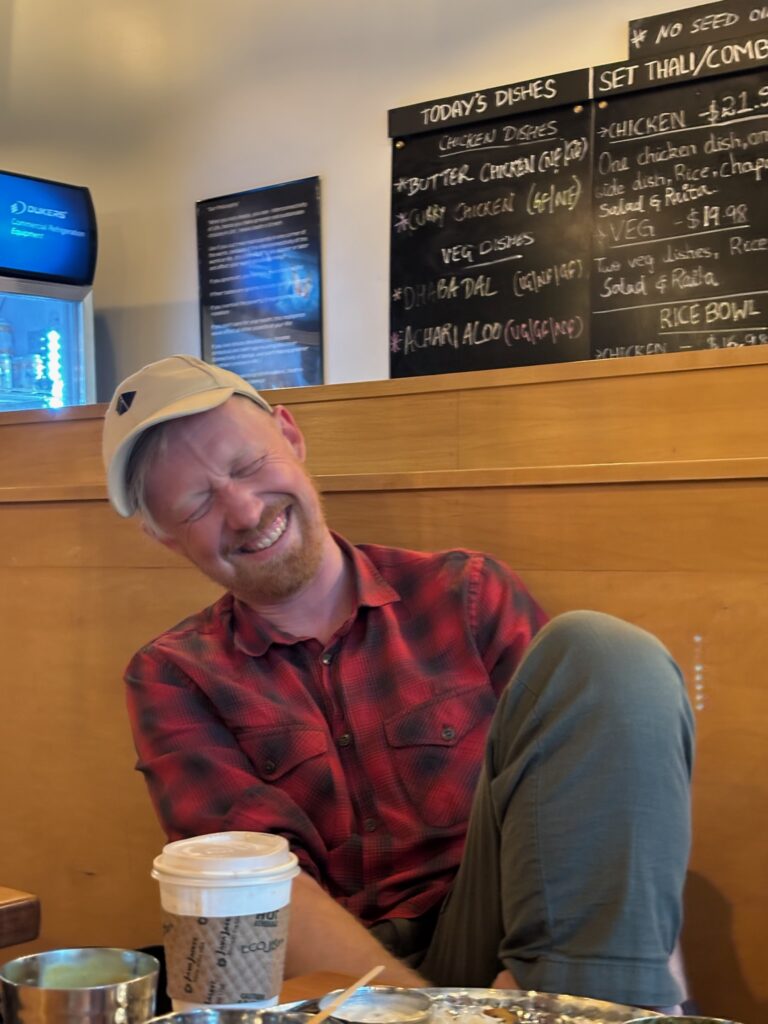

MBTA Boston Public Transportation Guide
The MBTA (or “the T” as locals call it) is Boston’s subway and bus system. After a month of daily use, here’s what you need to know about navigating the city efficiently.
Payment System CharlieCard or CharlieTicket: These are your travel cards available at any T station kiosk. You can also use contactless payment (credit cards, Apple Pay, Google Pay) for individual rides. The MBTA has been transitioning to tap-to-pay systems, making CharlieCards less essential than before, though they’re still useful for passes.
Load money at any station, online, or through mobile apps. Monthly and weekly passes still require CharlieCards or CharlieTickets.
The Five Subway Lines
Red Line: Harvard, MIT, South Station Your academic and cultural lifeline. Runs from Alewife in Cambridge through Harvard Square, Porter Square, Davis Square, and downtown to South Station.
Green Line: Fenway, Boston University, Boston College
Actually four separate branches (B, C, D, E) that share downtown tracks. Takes you to Fenway Park, several universities, and Boston’s best neighborhoods.
Blue Line: Connects to airport and Revere Beach Runs from Bowdoin downtown to Wonderland in Revere. Perfect for airport connections and beach access.
Orange Line: Forest Hills to Oak Grove Connects Jamaica Plain to downtown and north to Malden. Less tourist-focused but essential for certain neighborhoods.
Silver Line: Bus Rapid Transit Technically buses but functions like subway in some sections. Most useful for airport connections and South Boston.
Essential T Tips Peak hours (7-9 AM and 5-7 PM) get crowded. If possible, travel mid-morning or mid-afternoon for more comfortable rides. Weekend service has reduced schedules, especially late night. The T is an aging system, so delays happen. Build buffer time into important appointments.
Download the Transit app for real-time departures and route planning. Weekly passes ($22.50) pay for themselves if you ride more than 9 times. Monthly passes ($90) are worth it for extended stays.
MBTA Cultural Notes “Inbound” means toward downtown, “Outbound” means away from downtown. Let people exit before boarding (this is taken seriously in Boston). Stand right, walk left on escalators. Red Sox game days make certain lines extremely crowded.
Boston Travel FAQ
How long should I spend in Boston? You can hit the highlights in 3-4 days, but a week lets you dig deeper. A month? That’s when the city starts revealing its layers. Boston rewards longer stays because it’s a city of neighborhoods, each with its own character.
Is Revere Beach worth staying at? Absolutely, especially if you like slower mornings and cheaper rent with ocean views. Revere Beach offers ocean lifestyle with city access. Rent is 30-40% cheaper than downtown Boston, and the Blue Line gets you downtown in 30 minutes.
Do I need a car in Boston? Not at all. Between the T, bikes, and your own feet, Boston’s compact enough to explore without driving. Boston is one of America’s most walkable cities, and parking is expensive ($25-40/day downtown) and often impossible to find.
What’s one thing tourists usually miss? The Armenian Museum. It’s not flashy, but it holds weight and soul. It tells a crucial piece of Boston’s immigrant story with deeply moving exhibits.
Best local experience? The Nahant bike ride. A bike, a breeze, and the Atlantic on both sides. It combines physical activity, natural beauty, historical significance, and solitude.
How expensive is Boston? Very expensive, comparable to San Francisco or New York. Coffee runs $4-6, decent dinner $25-35 per person, museum admissions $15-25. But free activities abound: beaches, parks, walking tours, and many world-class institutions.
Final Boston Travel Thoughts
Boston isn’t a city that demands attention. It earns it. It’s a place where you can step into history and step back out into a modern coffee shop. Where freedom was debated, fought for, and still feels alive in the architecture and alleyways.
This month gave me moments: quiet, loud, thoughtful, electric. I left Boston slower in a good way. More grounded. And with a few new favorite coffee orders, but also with a deeper understanding of what makes Boston special.
Boston taught me that the best travel experiences happen in the spaces between planned activities. In morning walks on empty beaches. In afternoon hours at library tables. In conversations with strangers on harbor cruises. In the rhythm of daily life in a place that isn’t home but could be.
What Boston Teaches Travelers The city showed me how history lives not just in museums but in the way streets are laid out, in the names of neighborhoods, in the accents of longtime residents. How immigrant communities don’t just add to a city’s culture, they transform it, creating something new while preserving something essential.
The Value of Slow Travel I learned that a month is long enough to move beyond tourist attractions and discover personal favorites. Long enough to have a regular coffee shop, a preferred T route, a favorite spot for watching sunsets. Long enough to feel like a temporary local rather than a perpetual visitor.
The pace of discovery changes when you’re not trying to maximize every moment. When you can repeat experiences, compare them, let preferences develop naturally. When you can have a bad day and know there are more chances to get it right.
Boston’s Lasting Impact Travel isn’t just about going somewhere new. It’s about letting somewhere new shape who you are when you return. Boston shaped me by teaching patience, by showing me how history lives alongside the present, by demonstrating that the best experiences often happen when you’re not trying to optimize for experiences.
The month in Boston became a template for how I want to travel: longer stays, deeper connections, less optimization, more discovery. Not just seeing places, but understanding them. Not just visiting cities, but letting them visit you back.
The waves are still there at Revere Beach, the books still wait in Bates Hall, the history still lives in the narrow streets. The city continues its patient work of earning attention, one visitor at a time, one story at a time, one month at a time.
More Lost & Lore travel reads
- Becoming a Digital Nomad
- Becoming a Digital Nomad, Part 2
- Belgrade: A Digital Nomad’s Essential Guide
- Chiang Mai’s Best-Kept Secrets for Digital Nomads
- Backpacking on a Budget: A Guide to Affordable Adventures
Conclusion: Why Boston works for remote life
If you are a remote worker who loves cities with history and water, Boston belongs on your list. Start at the beach. Ride the Blue Line into town. Walk until your feet ask for a bench. Then open your laptop and get a little done before dinner. That rhythm worked for me. I think it will work for you too.
If you like this piece, browse more stories on Lost & Lore and tell me what city you want next. I am always looking for places where work and wonder live side by side.
Is Boston a good base for digital nomads without a car?
Yes. Pick neighborhoods on rapid transit like Revere Beach, East Boston, Cambridge, or Somerville. You get fast trains, walkable streets, and plenty of places to work.
Where should I stay for a month on a realistic budget?
Look for furnished sublets near the Blue Line or Red Line. Aim for buildings with a gym and quiet common areas, and confirm strong Wi-Fi before you book.
What are underrated day trips reachable by transit?
Coastal towns north of the city on the commuter rail, island parks on the harbor ferries, and small beach communities connected by bike paths or causeways.
When is the best season for a remote month in Boston?
May to June and September to October. You get mild weather, patio seating, and long walking days without winter slush or peak summer crowds.
How can I keep costs down while still enjoying the city?
Use weekly transit passes, choose lunch specials over dinner, pack picnic snacks for waterfront sunsets, and plan free days around beaches, parks, and public art.

